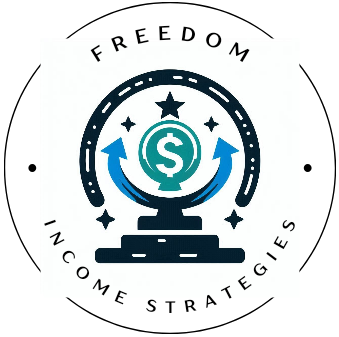Compounding is often called the “eighth wonder of the world” for good reason—it allows your investments to grow exponentially over time. When combined with dividend reinvestment, compounding can significantly enhance your portfolio’s growth and help you achieve long-term financial goals. In this post, we’ll explore how dividend reinvestment works, the benefits of compounding, and how you can harness this strategy to supercharge your portfolio.
What is Dividend Reinvestment?
Dividend reinvestment occurs when the dividends you receive from your investments are used to purchase additional shares of the same stock, rather than being taken as cash. This process is typically facilitated through Dividend Reinvestment Plans (DRIPs), which allow investors to automatically reinvest their dividends without having to manually purchase more shares.
Key Benefits of Dividend Reinvestment:
- Increased Share Ownership: Each time you reinvest dividends, you acquire additional shares, which increases the amount of future dividends you will receive.
- Compounding Returns: The more shares you own, the more dividends you earn, creating a compounding effect that accelerates your portfolio’s growth over time.
- Cost Efficiency: Many companies and brokerages offer DRIPs without fees, allowing you to reinvest dividends without incurring additional costs.
How Compounding Works with Dividends
Compounding refers to the process of earning returns on both your initial investment and on the returns that investment generates. When you reinvest dividends, you are effectively compounding your returns because each dividend payment allows you to purchase more shares, which in turn earn more dividends. Over time, this process can lead to exponential portfolio growth.
Example of Compounding with Dividends:
Imagine you invest $10,000 in a stock that pays a 3% dividend yield, and you reinvest all dividends. With a modest dividend growth rate of 5% per year, your investment could look like this over 10 years:
| Year | Initial Investment | Dividend Yield | Annual Dividend | Reinvested Dividend | Total Value |
|---|---|---|---|---|---|
| 1 | $10,000 | 3% | $300 | $300 | $10,300 |
| 2 | $10,300 | 3.15% | $325 | $325 | $10,625 |
| 3 | $10,625 | 3.31% | $351 | $351 | $10,976 |
| 4 | $10,976 | 3.48% | $382 | $382 | $11,358 |
| 5 | $11,358 | 3.65% | $415 | $415 | $11,773 |
| 6 | $11,773 | 3.83% | $451 | $451 | $12,224 |
| 7 | $12,224 | 4.02% | $492 | $492 | $12,716 |
| 8 | $12,716 | 4.22% | $537 | $537 | $13,253 |
| 9 | $13,253 | 4.43% | $586 | $586 | $13,839 |
| 10 | $13,839 | 4.65% | $644 | $644 | $14,483 |
By reinvesting dividends each year, your investment grows more rapidly than if you simply took the dividend payments as cash. Over a 10-year period, a $10,000 investment with a 3% dividend yield and 5% dividend growth rate could grow to nearly $14,500—an impressive increase fueled by the power of compounding.
The Long-Term Impact of Reinvesting Dividends
The true power of compounding becomes more apparent the longer you stay invested. For investors with a long-term horizon, reinvesting dividends can dramatically increase both your dividend income and the overall value of your portfolio. Even small dividend reinvestments can compound into significant gains over decades.
For example, let’s say you invest in a dividend stock with a 4% yield and a 6% annual dividend growth rate. If you start with $10,000 and reinvest dividends over a 20-year period, your investment could potentially grow to:
- Year 1: $400 in dividends.
- Year 5: $526 in annual dividends (after reinvestment).
- Year 10: $700 in annual dividends.
- Year 20: $1,245 in annual dividends.
By the end of the 20 years, your initial investment has grown both in capital value and annual dividend income, creating a dual compounding effect on both the number of shares and the dividends they produce.
Seeking Alpha also offers perspectives from experienced investors that highlight the long-term benefits of compounding.
Compounding vs. Taking Dividends as Cash

While reinvesting dividends can lead to higher long-term growth, some investors may prefer to take their dividends as cash, especially if they rely on the income for living expenses. However, for those who do not need immediate cash flow, reinvesting dividends is a powerful way to maximize long-term returns.
Pros of Reinvesting Dividends:
- Faster Portfolio Growth: Reinvesting allows you to buy more shares and grow your portfolio faster.
- Harnessing Compounding: The more dividends you reinvest, the more shares you own, creating a cycle of increasing returns.
Pros of Taking Dividends as Cash:
- Immediate Income: Investors who need income for living expenses can use dividend payouts without selling shares.
- Less Risk: If the market or a company’s stock declines, taking dividends as cash can provide a buffer against potential capital losses.
How to Get Started with Dividend Reinvestment
Most brokerage platforms and companies offer automatic dividend reinvestment plans (DRIPs). These plans allow you to automatically reinvest your dividends without having to manually purchase additional shares. The best part is that many DRIPs do not charge transaction fees, making it a cost-effective way to grow your portfolio.
To start reinvesting dividends, follow these steps:
- Choose Dividend-Paying Stocks: Look for companies with a solid history of paying and increasing dividends.
- Set Up Automatic Reinvestment: Opt into a DRIP through your brokerage or the company’s investor relations department.
- Monitor Your Portfolio: Keep track of your dividend reinvestments to ensure your portfolio continues to align with your investment goals.
Conclusion: Unlock the Full Potential of Your Portfolio
The power of compounding through dividend reinvestment is one of the most effective ways to grow your wealth over time. By reinvesting dividends, you can accelerate your portfolio’s growth and enjoy the benefits of compounding returns. Whether you’re just starting your investment journey or looking to optimize your existing portfolio, taking advantage of DRIPs and the power of compounding can help you achieve long-term financial success.
With patience, discipline, and a commitment to reinvesting dividends, you can supercharge your portfolio and watch your wealth grow exponentially over time.
Here’s a little transparency: Our website contains affiliate links. This means if you click and make a purchase, we may receive a small commission. Don’t worry, there’s no extra cost to you. It’s a simple way you can support our mission to bring you quality content.

